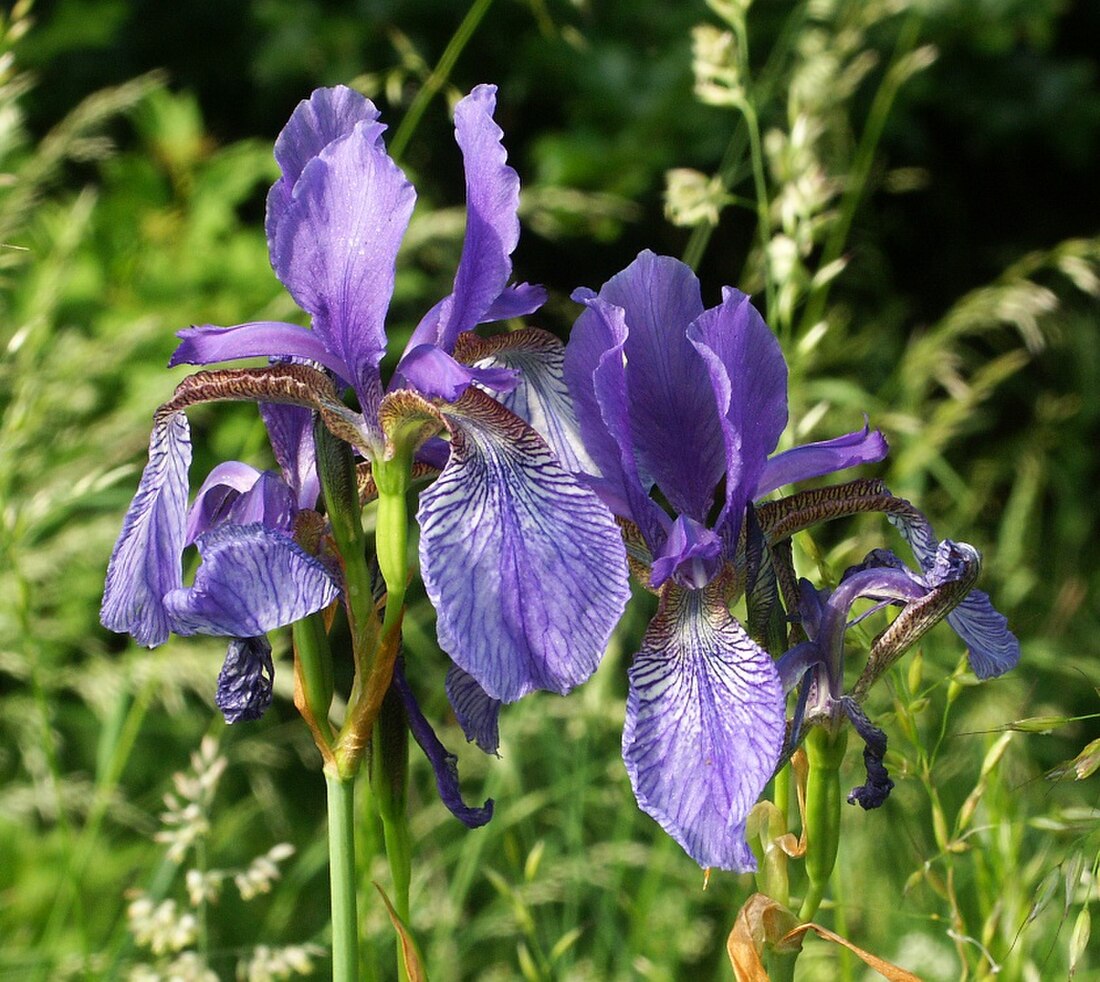Top Qs
Timeline
Chat
Perspective
Iris subg. Limniris
Subgenus of flowering plants From Wikipedia, the free encyclopedia
Remove ads
Subgenus Limniris is one subgenus of beardless irises, which don't have hairs on their drooping sepals, also called their falls.
'Limniris' is derived from the Latin for marsh or living-in-lakes iris,[1] or pond iris. This refers to the fact that most species can be grown in moist habitats for part of the year.[2]
It was originally described by Tausch in Deut. Bot. Herb.-Buch (Deutsche Botaniker) in 1841.[3] Édouard Spach made changes 1846 in Ann. Sci. Nat., Bot. (Annales des Sciences Naturelles; Botanique).[4]
It was divided into sections, 'Limniris', which is further divided down to about 16 series, and 'Lophiris' (also known as 'Evansias' or crested iris).[5] They are both polyphyletic.[6] It has 45 species, which are widely distributed in the Northern Hemisphere.[3]
It is a group that has been recognized with few changes since Dykes's 1913 monograph on the genus Iris. Lawrence (1953), Rodionenko (1987) and then Mathew (1989) all tried to modify the group.[7]
Various authors have tried to classify the list in various ways. It is still undergoing study and variations.[7]
Remove ads
Taxonomy
Summarize
Perspective
Section Limniris
(listed alphabetically)
Section Lophiris
Otherwise known as 'Evansias' or crested iris.
- Iris confusa
- Iris cristata
- Iris formosana
- Iris japonica
- Iris lacustris
- Iris latistyla
- Iris milesii
- Iris subdichotoma
- Iris tectorum (Wall iris)
- Iris tenuis (Clackamas iris)
- Iris wattii
Remove ads
References
Sources
External list
Wikiwand - on
Seamless Wikipedia browsing. On steroids.
Remove ads

